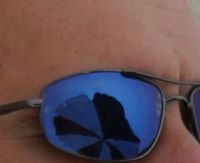Which of the following mammals lays eggs?
The echidna is a monotreme, which is a egg laying mammal. Echidnas and platypuses are the only mammals that reproduce in this manner. Like other mammals, they are warm-blooded and have hair. Being a mammal, females possess mammary glands which are used to feed their young.
There are four species of echidna which are native to New Guinea and Australia. They are medium sized and usually brown or black in color. The echidna is covered in coarse hair and spines. They resemble the true anteater of the Americas but aren't closely related. They have short, strong limbs with heavy claws which make them powerful diggers which is used to tear apart logs or anthills to find ants, termites, insect larvae, and earthworms.
Wallabys, Tasmanian Devils, and Opossums are all marsupials. Marsupials have a shorter gestation and give birth much earlier in development than other mammals. To compensate for this, females have a pouch to facilitate development and growth of their young.
Having a pouch isn't unique to marsupials as echidnas also posses them. After using a lizard like tooth to break out of its egg, the single hatchling, called a puggle, will remain in its mother's pouch for 45-55 days feeding. After this period of development, the mother will dig a burrow to suckle the puggle. The puggle will remain in the den up to a year before leaving.
More Info:
en.wikipedia.org













